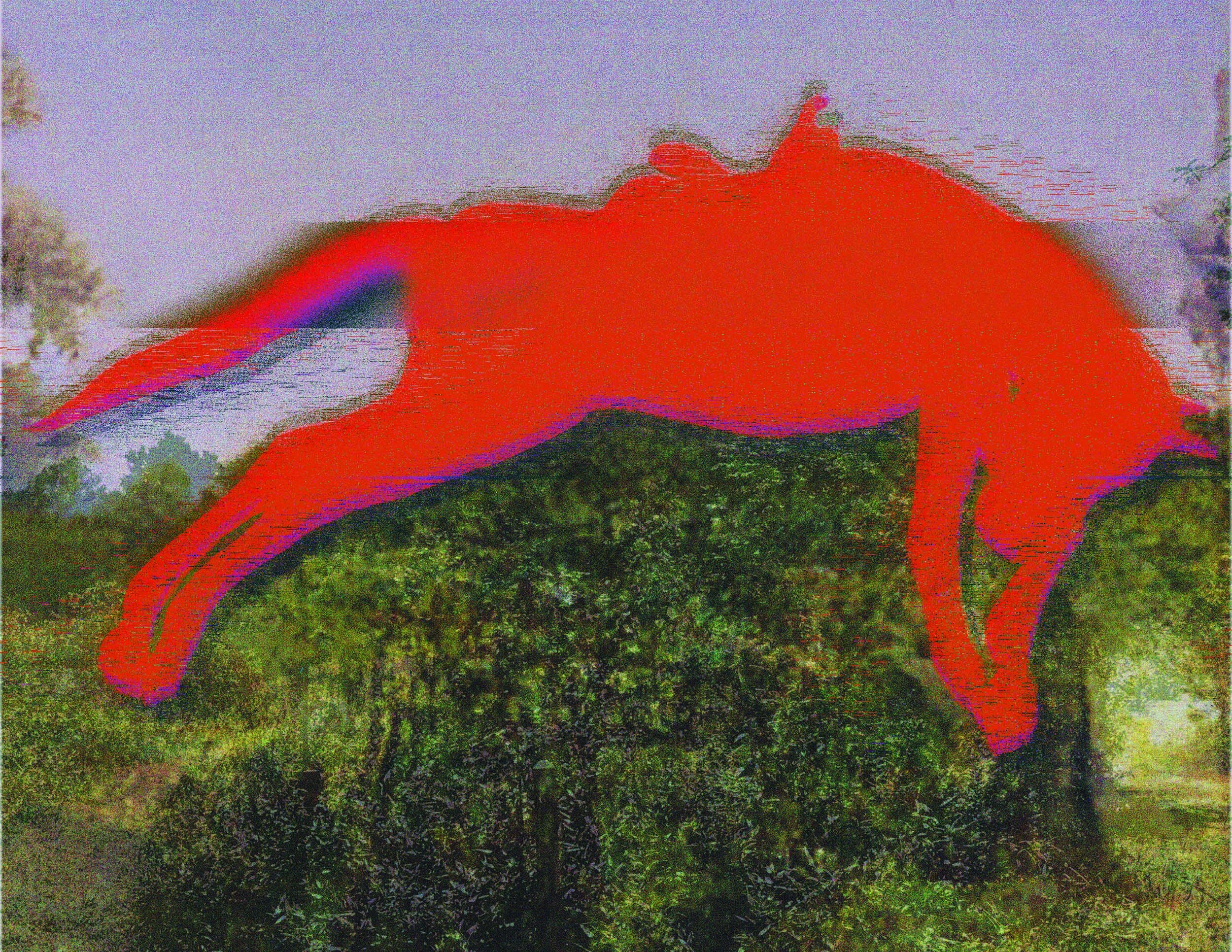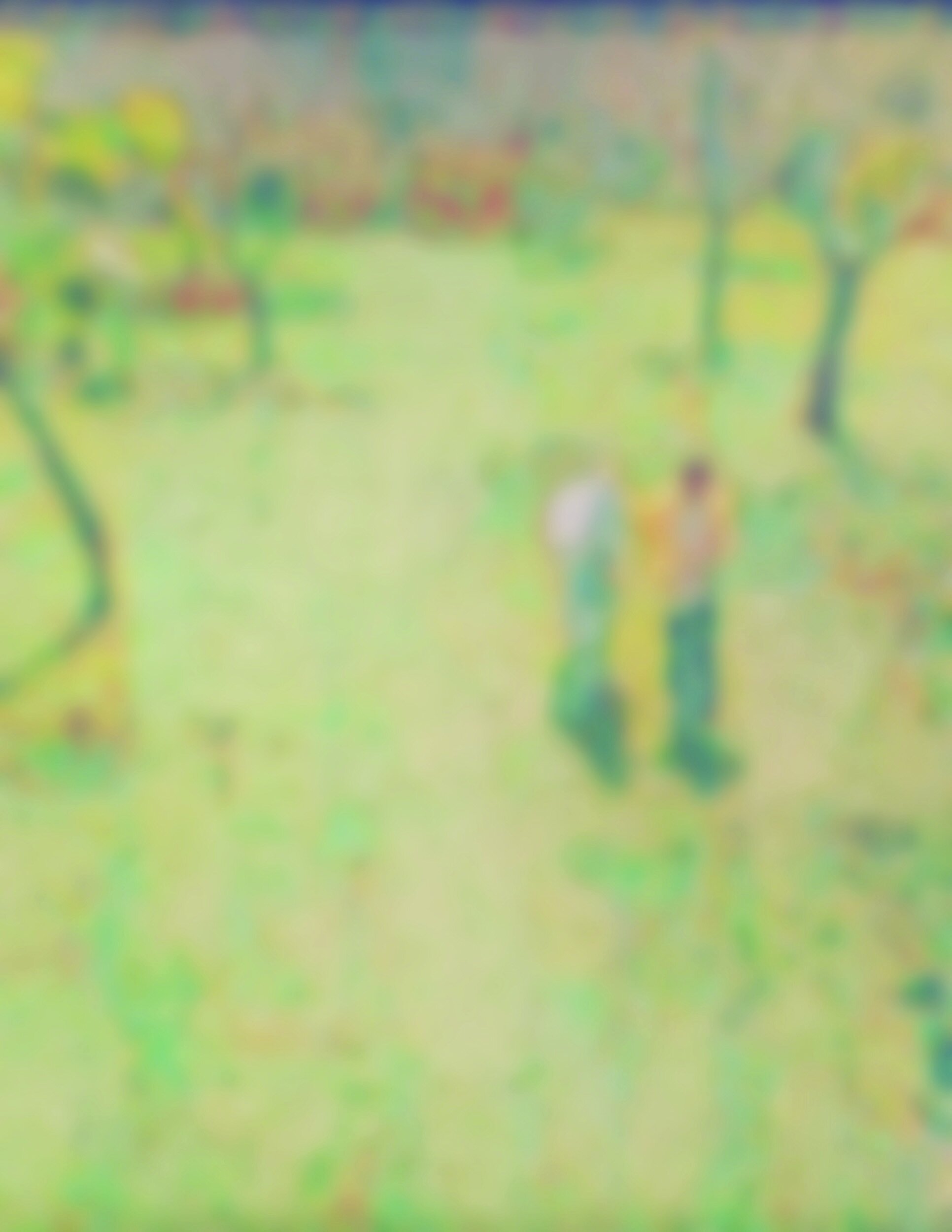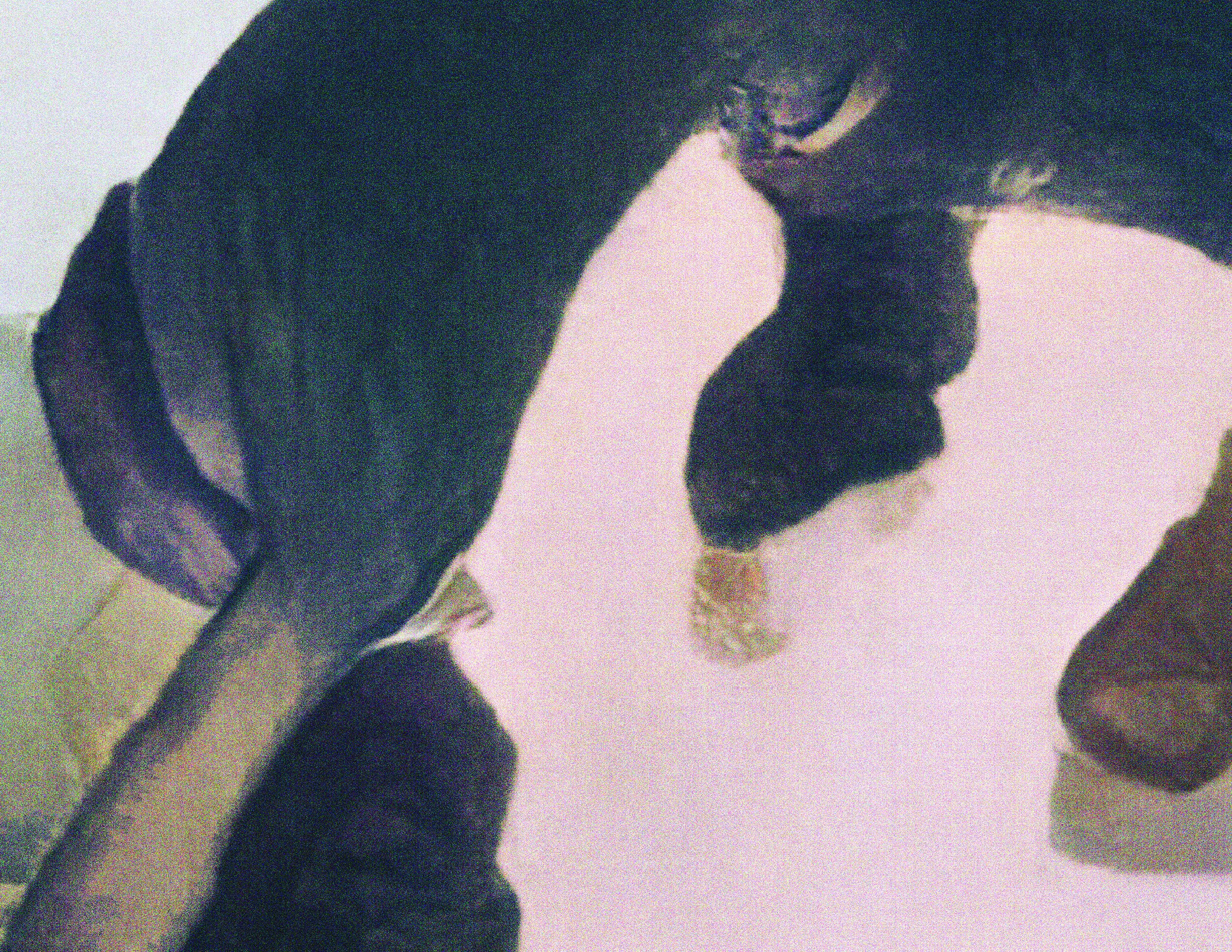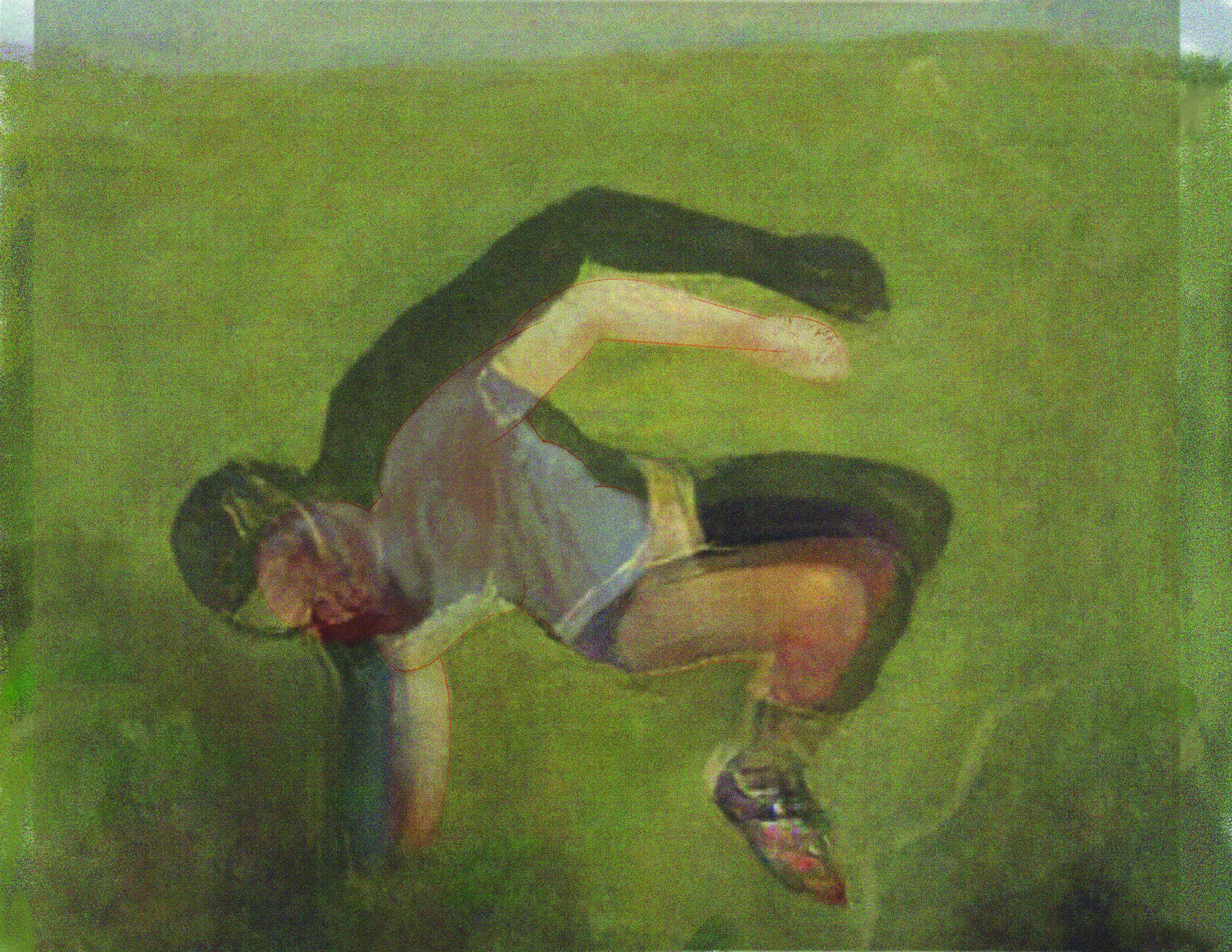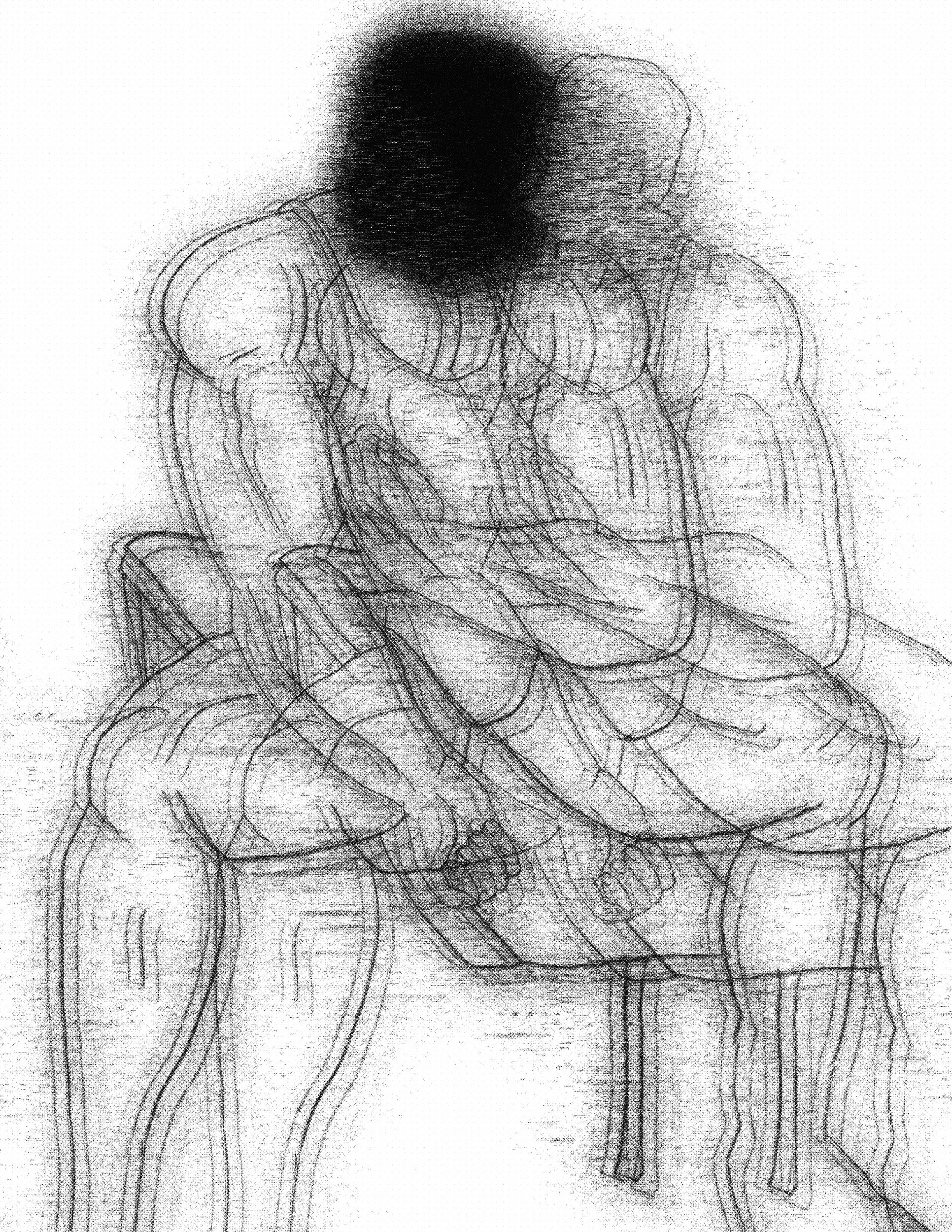Oblivion
By Jackson Wirth
Interview by Egan Parks
Can you tell me about how the works in “Oblivion” were made?
I spent the last 5 years working in higher education, specifically at a college of art and design within the Admissions department. A large part of my day to day operations included providing portfolio feedback for prospective students. It was my responsibility to offer advice on formal and technical skills, artistic processes, techniques, and content development strategies. Over time, I found that giving so much creative output was draining the energy needed for me to show up to my own practice of drawing and painting.
When feeling like my practice was becoming obsolete, the word “Oblivion” started to make its way to the front of my mind. Close friends might describe me as one who has a flair for drama, but it did feel like my practice was dying, or at the least had become forgotten. Without the capacity to sit down at an easel, I started leaning on documenting my days via lens based projects. This new work is a combination of photographs, drawings, and paintings that I’ve made over the years that have been digitally collaged using programs like Photoshop and Procreate as a means to arrive at one final piece. Each piece is different, some containing dense layers of editing, others being simple manipulations to the original image/drawing/painting. Long term goals for the work include large format printing, screen printing, and whatever else feels right.
“Oblivion” seems very process based. Was there an idea of how you wanted to approach the work before you made it or was it something that happened more organically?
Both! When starting this work, I knew that I wanted to make a zone that could serve as an allegory for memory. Negotiating with myself on the specificity of memory can feel organic when referencing something trivial, such as remembering how to do a backbend or a cartwheel. Though, when referencing trauma, or a lack of memory, I find myself getting stuck on how I want to work through the process and how much I care to disclose.
Your background is in more classical or representational drawing and painting. What was the motivation to move into a more interpretive and abstract way of working?
I don’t feel like I’m leaving behind a more traditional mode of making, rather welcoming the opportunity to apply what I’ve learned from past ways of creating to this new work. As I continue to make this work, it feels necessary to leave room for error. I want there to be open room for perception, and to hopefully let titles serve as a means for finding a reference and/or imagery within the work. If the title of a piece is lost on the viewer, and imagery isn’t recognizable, then maybe what I’m doing is making a broader “Oblivion”, a space beyond memory, an opportunity for total abstraction.
Do you see the process of making the work as tied to the overall idea behind it?
Absolutely. I’m using editing softwares without tutorials or prior experience, which to me is somehow mimetic of recalling memories. There’s probably poetry to be had when comparing the generation of multiple layers on a digital file vs. the multiple layers of complexity that comes with analyzing lived experiences.
Is the visual layering intended to represent or compliment the thematic layering in some way?
Yes. I’m relying on using tools that amplify the noise and softness of images. In many ways “noise” and “softness” is thematic to the concept of this project, in that just remembering anything sometimes feels like a weird dichotomy of clamor and warmth.
I know “Oblivion” is personal in nature but are there any themes you are looking at with it? And has the experience of making the work been revealing in any way?
Thematically this work feels like an opportunity for me to virtually explore pockets of my identity by digitally regurgitating memory through abstraction. If anything has been revelatory, it’s that there’s magic in honoring nuance. For me to contextualize my life in this way feels no different than the primal RUSH that came when I first created a MySpace page many years ago. It’s a new territory for coding, a space to let thought be forgotten and occasionally honored.
To that idea of occasionally honoring the regurgitating memory I wonder if you have any thoughts on the way memories can be slippery and sort of parallax at times. The way the experience leaves a feeling or impression at the time of it happening vs. the way you might feel when you attempt to recall that experience as a memory. It seems like your work is sort of situated within that space.
This zone that you’re describing is exactly where I want anything that I ever make to exist. In hoping that this work can be an allegory for memory, there’s also hope that at its core it can serve as documentation of minutia.
The way that an experience leaves a feeling vs. how said feeling is recalled is Oblivion
Do you have any plans to continue the work or evolve it in any way in the future?
Yes, both! I’ve grappled with where I let thiswork lay, be it in digital spaces, or if it’s time to make the work tangible. I think that the next step in my studio will be to experiment with some large format printing. Recently I’ve been in connection with some friends about showing the work in their galleries, which I’m hoping to be prepared for by early next year.
Minutia in memory is often hazy, misrepresented, or presents itself with new details each time that a specific memory is brought up. It can be as vague as, “was my childhood bike blue or green’’, and tightens in complexity when referencing trauma. This space, whether grand or small, is the future of my practice.
Minutia in memory is often hazy, misrepresented, or presents itself with new details each time that a specific memory is brought up. It can be as vague as, “was my childhood bike blue or green’’, and tightens in complexity when referencing trauma. This space, whether grand or small, is the future of my practice.
The way that an experience leaves a feeling vs. how said feeling is recalled is largely what “Oblivion” is about.
Do you have any plans to continue the work or evolve it in any way in the future?
Yes, both! I’ve grappled with where I let this work lay, be it in digital spaces, or if it’s time to make the work tangible. I think that the next step in my studio will be to experiment with some large format printing. Recently I’ve been in connection with some friends about showing the work in their galleries, which I’m hoping to be prepared for by early next year.
